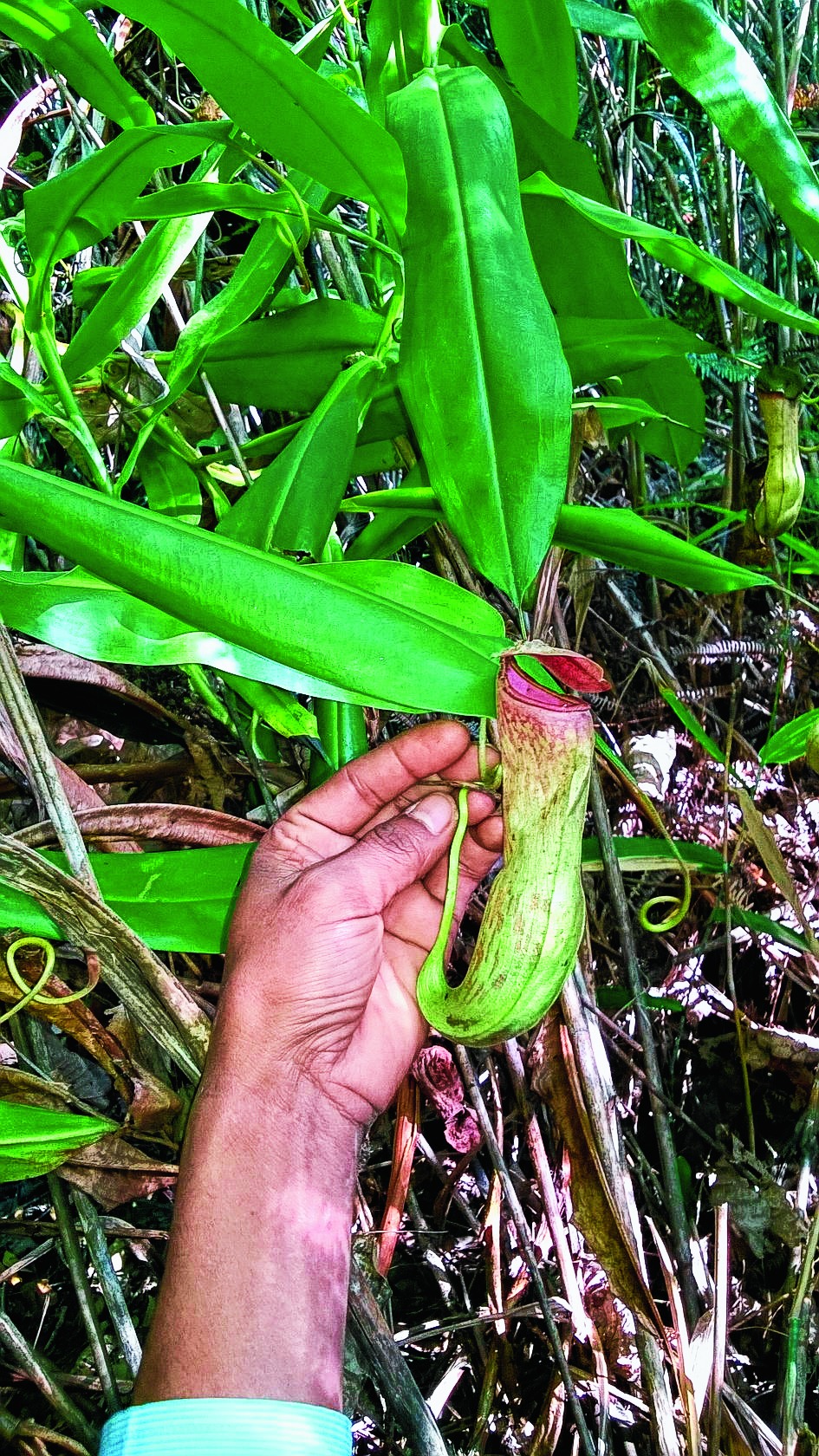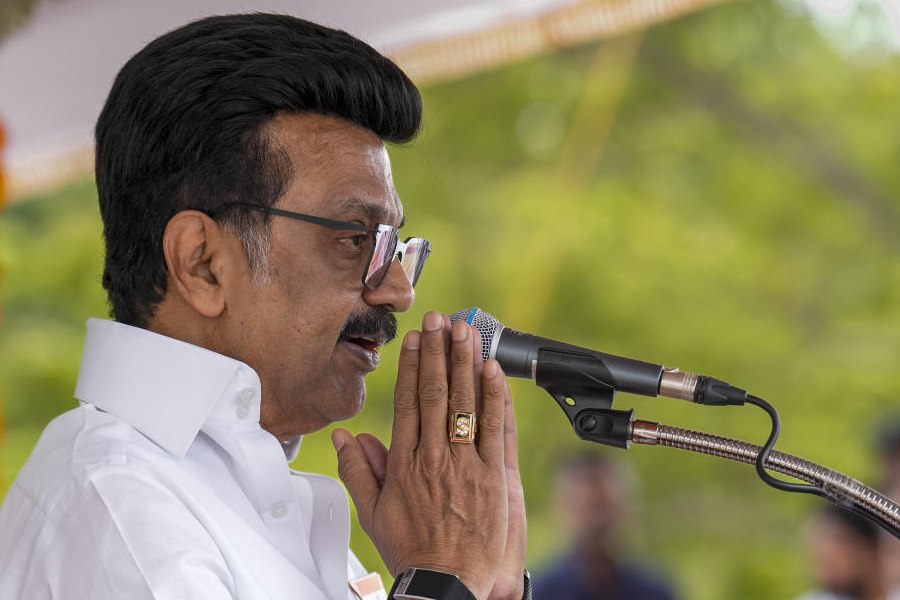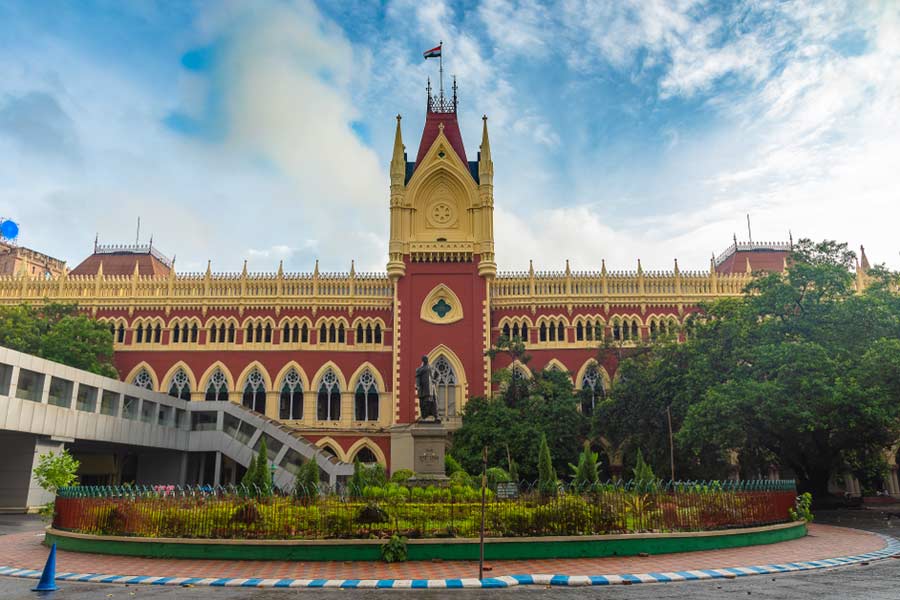
Guwahati, Nov. 16: The pitcher plant ( Nepenthes khasiana) which is known only in Meghalaya has been found in Assam for the first time.
The endangered species was spotted in the wild by Albert L.S. Betlu who is working at the North Eastern Region Community Resource Management Project in Dima Hasao district of Assam. The sighting has been reported in the Current Science journal.
It was found at Vaitang Hebron in Biate village, 150km from Haflong, the headquarters of Dima Hasao at an altitude ranging from 510 to 1,115 metres. The total geographical area of the village is about 1,000 hectares of which approximately 200 hectares of forest area has been designated as Community Conserved Area (it is not known if Nepenthes khasiana grows here).
"The research on pitcher plant was done in my spare time and in my own interest," Betlu told The Telegraph. The research was conducted from March 2014 to April 2015.
In Meghalaya, it is found in the Jarain area of Jaintia hills, the Baghmara area of Garo hills and adjacent areas of Khasi Hills.
The specimens were identified using Flora of Assam and the voucher specimen is deposited in herbarium of the department of botany, Haflong Government College. It can be easily identified by its uniquely modified leaf pitchers even in vegetative condition.
"The population of Vaitang Hebron mainly depends on crops grown in jhum areas. Traditional practice of long gaps of jhum cycle is now reduced with increased population over the years leading to destruction of significant area of pitcher plant habitat. Informal discussions with the villagers revealed that the species is known only to a few elderly persons and is locally known as loisul kola or jug par (jug flower). It is also found that jhum cultivators destroy these by cutting or uprooting the plants as they believe that this plant signifies bad fortune," Betlu said.
He said though both in situ and ex situ, conservation measures have been implemented in Meghalaya, the survival of this species in the wild in Assam is doubtful# if urgent steps are not taken to survey and document all the plants.
"There is a need to generate awareness on the importance and need for conservation of this species among local people as well as the forest department," hesaid.
The species is under the negative list of exports of government of India.
The IUCN Red List of Threatened Species says it is intensively exploited for its medicinal value and as source of income for people's daily needs. "Primary collectors are members of the local community. They collect plants from nearby areas and sell these to markets at a cheap price. The powder of the roots and pitcher are used in skin diseases. Juice from unopened pitchers is used in making eye drops. The fluid is used as ear drops."











